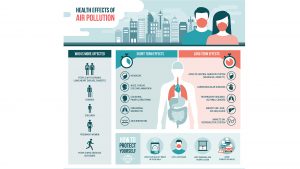A study led by the Barcelona Institute for Global Health (ISGlobal) has revealed the top causes of air pollution related deaths.
The team analysed two pollutants, PM2.5 and NO2, in 857 European cities to determine the most likely causes of air pollution related deaths.
The results show a huge variability between different cities, so the researchers suggested that different strategies to combat pollution should be adopted in each city.
However, when the results were combined between the two pollutants, the three biggest causes of deaths associated with air pollution were transport, agriculture, and domestic activities.
The study, ‘Spatial and sector-specific contributions of emissions to ambient air pollution and mortality in European cities,’ was published in The Lancet Public Health.
Calculating air pollution related deaths
To estimate the contribution of each emission source to the concentration of pollutants in the atmosphere, the researchers used the Screening for High Emission Reduction Potentials for Air quality (SHERPA) tool, developed by the European Commission’s Joint Research Centre (JRC).
This model considers factors such as meteorology or chemical transformations to simulate the concentration of pollutants in the atmosphere.
The SHERPA tool calculated the cause of air pollution related deaths by measuring atmospheric changes of PM2.5 and NO2.
Finally, a comparative risk assessment was carried out to estimate the mortality that could be prevented under different scenarios of reduced pollutant concentrations associated with each of the emission sources.
Contributors to PM2.5 mortality
Air pollution related deaths associated with PM2.5 was mainly caused by emissions from residential sources, with an average contribution of 22.5% across all cities.
The second biggest cause is the agricultural sector, which accounts on average for 18% of PM2.5 mortality. This was followed by industry (13.8%), transport (13.5%), the energy sector (10%), natural sources (8.8%), and shipping (5.5%).

“If we look at NO2 and PM2.5 combined, traffic remains the largest contributor to both poor air quality and associated mortality.
“However, if we look exclusively at the PM2.5-related mortality, we see a significant contribution from the residential sector and agriculture,” explained Sasha Khomenko, ISGlobal researcher and first author of the study.
PM2.5 particles are the air pollutant with the greatest negative impact on mortality in European cities. The team stresses that more research is needed to determine which components of PM2.5 particles are most harmful to health, so that more precise mitigation measures can be designed.
Contributors to NO2 mortality
NO2 mortality is mainly caused by the transport sector, which accounted for a staggering 48.5% of air pollution related deaths.
Other sectors with a considerable contribution were industry with an average of 15%, the energy sector with 14.7%, housing (10.3%), and shipping (9.7%).
NO2 is a gas that is generated in combustion processes, mainly from motor vehicles, but also in industrial or power generation facilities.
Mark Nieuwenhuijsen, director of ISGlobal’s Urban Planning, Environment and Health Initiative, stated: “Bolder measures are required to drastically reduce pollution and air pollution related deaths, which remains the main source of emissions.
“Leaders must also implement policies to mitigate the other sources of both NO2 and PM2.5 emissions, such as regulating emissions from industry and shipping, and limiting biomass burning in households and emissions from agriculture and livestock.”
He concluded: “To reduce air pollution related deaths, we need multisectoral holistic action and solutions, for example with task forces across the current silos at city, national, and EU levels.”
Top 3 causes of air pollution related deaths revealed - Innovation News Network
Read More


No comments:
Post a Comment